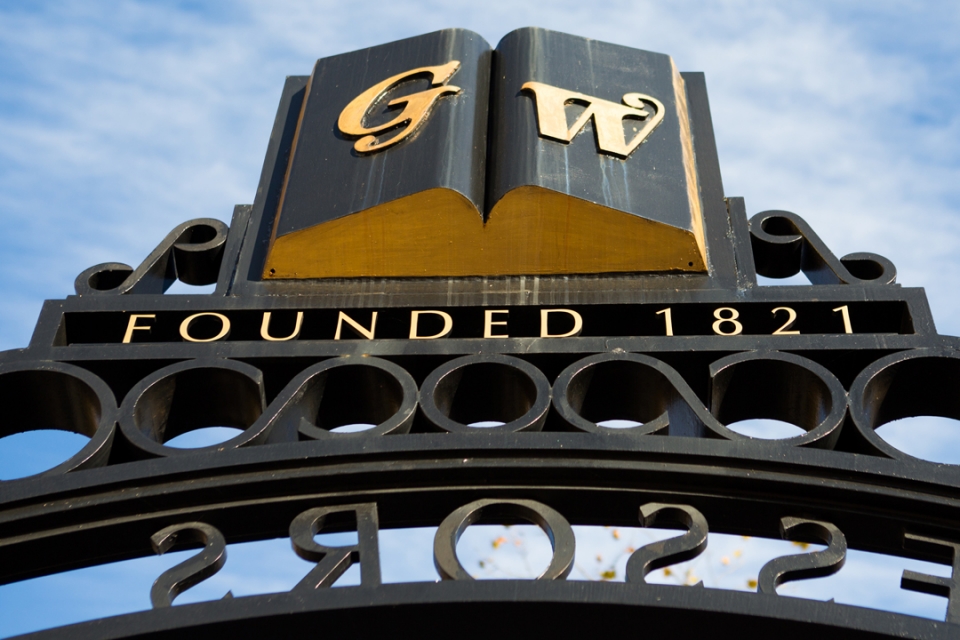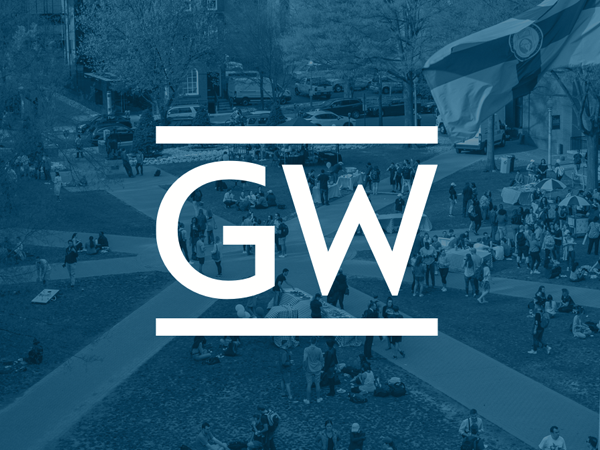Student enrollment and retention at the George Washington University have rebounded in 2021, Vice Provost of Enrollment and Student Success Jay Goff told the Faculty Senate Friday at its October meeting.
GW enrolled 2,571 first-year students, about a 30 percent increase from 2020, and first- to second-year retention improved from 88 to 91 percent. Of students who took a leave of absence in the spring of 2021, more than 70 percent have returned.
GW also enrolled an increased number of first generation students, students from low income families and traditionally underrepresented students, in part by using philanthropic funds to offer enhanced financial aid packages to Pell Grant-eligible members of the class of 2025.
“The big picture is that things look good,” Mr. Goff said.
GW’s overall graduate enrollment is slightly lower than it was in 2020, which Mr. Goff said was expected given the effects of the COVID-19 pandemic on international, part-time and adult student enrollment. International enrollment in particular dropped by about 7.5 percent, or 1,100 fewer students compared to fall 2019.
“Our primary work right now will be focusing on how [to] develop new outreach and recruitment plans that will help us regain these numbers,” Mr. Goff said. “This is a very important part of our campus student body.”
Envisioning a future campus
Executive Vice President and Chief Financial Officer Mark Diaz and Division of Safety and Facilities Vice President Scott Burnotes presented an update on the Strategic Campus and Facilities Master Plan, a set of suggestions for future development on the Foggy Bottom and Mt. Vernon campuses. Architectural firm Cooper Robertson assembled the plan by synthesizing feedback from GW students, faculty and staff.
Concepts included a pedestrian corridor running diagonally from the Milken Institute School of Public Health to the Elliott School of International Affairs; a “gateway health district” along 23rd Street NW, which would relocate the Medical Faculty Associates and its Ambulatory Care Center into a cohesive unit with GW Hospital and Ross Hall; and a reimagined Kogan Plaza with increased pedestrian friendliness, among other potential projects.
Mr. Diaz explained that these possibilities originate from the 2007 Foggy Bottom Campus Regulatory Master Plan, in which the D.C. Zoning Commission granted GW development rights to about 3.5 million square feet of property. The agreement included a stipulation that, in order to retain all rights, GW must develop or approve development of 70 percent of that property by 2027. Renovations and rebuilds do not count toward this total. At present, GW has developed about 43 percent of the total property identified in the 2007 plan. All building projects identified in the Strategic Campus and Facilities Master Plan are located, fully or partially, on 2007 development sites with the goal of reaching that 70 percent threshold.
GW President Thomas LeBlanc emphasized that the proposals in the plan are not stated commitments, but only provide a conceptual framework for future decision making. Campus development is just one of many strategic priorities for the university, he said, and will not be pursued at the expense of other priorities like student aid, diversity, equity and inclusion or deferred campus maintenance.
“This is really a lot of big ideas and concepts as we think about the very long-term future of our campus,” Dr. LeBlanc said. “No project that's being presented here has been approved by any body, including the administration or the board, for actual funding and construction. It's really a planning document.”
Provost’s remarks
Interim Provost and Executive Vice President for Academic Affairs Christopher Alan Bracey gave remarks including an update on the shared governance initiative announced last week by Board of Trustees Chair Grace Speights; the appointment of Senior Associate Vice Provost for Research Gina Lohr to an additional role as Office of the Provost Liaison to the Virginia Science and Technology Campus; the Postdoc Enhancement Initiative; the final report from the Post-COVID Academic Innovation Task Force; and continuing progress on the upcoming Diversity, Equity and Inclusion Review.
Professor Bracey also stressed the importance of flexibility and empathy as students report increased anxiety and deal with a challenging academic period in addition to external stressors.
“We need to be sending out a message that it is important to look out for one another as we continue to navigate our way through these ongoing challenges,” he said.
He also thanked participants in the Centuries Celebration Weekend for its impact and success. “From a provost’s perspective, there was a lot riding on the success of Commencement on the Mall for the classes of 2020 and 2021, given the long delay in the celebration of their academic achievements,” Mr. Bracey said. “It was a wonderful production I believe was executed quite flawlessly.”
Other business
The Senate approved nominations for standing committees, committee chairs and Student Association-appointed non-voting representatives. Arthur Wilson, chair of the Faculty Senate Executive Committee, provided an update on Senate activities including standing committee updates, the upcoming Faculty Assembly and further progress on shared governance.



